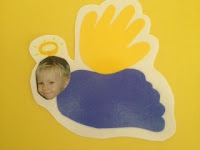Common Core is not going to
be the Grinch to steal away your fun this month. Take a look at some of these ideas I’ve got for you!
RF.3c Paper Chain - Each day let children write a high frequency word on a strip of paper and glue the ends to make a link in a chain. They can practice reading over previous words each day as they add a new word and link.
*Adapt these for Hanukkah or Kwanzaa colors.
0A.A1Snowman Math - Give children the outline of a snowman similar to the one shown. They can take buttons or other manipulatives and place sets in the top two sections. Join them together in the bottom circle to make the sum. Ask students to write the equation.
*Give children a certain number of buttons. How many different combinations can the make on the snowman to come up with the same sum?

 LS.4 Candy Cane Vocabulary
– Take a square sheet of paper and color red around the edges on all four
sides. Roll up diagonally, bend one end, and you’ll have a candy cane. Use a web to brainstorm descriptive
words for candy canes.
LS.4 Candy Cane Vocabulary
– Take a square sheet of paper and color red around the edges on all four
sides. Roll up diagonally, bend one end, and you’ll have a candy cane. Use a web to brainstorm descriptive
words for candy canes.
SL.5 Family Celebrations –
Make houses from construction paper similar to the one shown. (Fold in half. Open. Fold in the top corners. Fold up the bottom edge.)
Children can draw pictures
and write stories of how their family celebrates. Let them share their projects with classmates.
W.3 Timeline – Give children long pieces of paper so they can make a time line of the “Gingerbread Man.” (I cut my strips from grocery sacks.)
*Read several versions of the “Gingerbread Man” and compare and contrast.
 W.2 Descriptive Writing –
Fold 2 sheets of paper in half and staple to make a book for each child. Children think of a title for their
books and add their name as author and illustrator. Have them write and complete the following statements on
each page:
W.2 Descriptive Writing –
Fold 2 sheets of paper in half and staple to make a book for each child. Children think of a title for their
books and add their name as author and illustrator. Have them write and complete the following statements on
each page:
My
(holiday) smells like…
My
(holiday) looks like…
My
(holiday) sounds like…
My
(holiday) feels like…
My
(holiday) tastes like…
*For younger children run
off the sentences and let them dictate sentences.
G.A.1 Preposition Elf –
Hide an elf (Elf on the Shelf or one of his friends) or similar seasonal toy in
a different place in the room every day.
Encourage children to use complete sentences as they describe where the
elf is.
*Let children take turns
hiding the toy and calling on friends to explain its location.




























